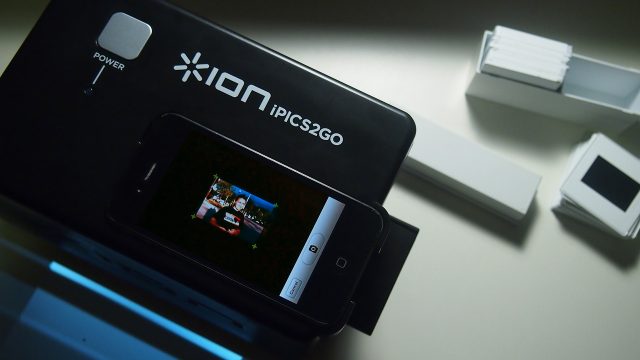
Ion, a company well known for its USB turntables and iCade arcade cabinet for iPad, recently released a photo and film "scanner" accessory for the iPhone 4 and iPhone 4S called the iPics2Go. The $50 device is little more than a black plastic box with some LEDs inside, a slot for 4x6" photos, and a carrier for 35mm negatives and slides, but together with a free companion app, iPics2Go makes it simple to get old photos onto your iPhone for easy manipulation, editing, and posting online.
We got a sample of the iPics2Go to test out, and found that while its simple design has some flaws, it is easy to use and makes working old analog photos into our digital social network a breeze.
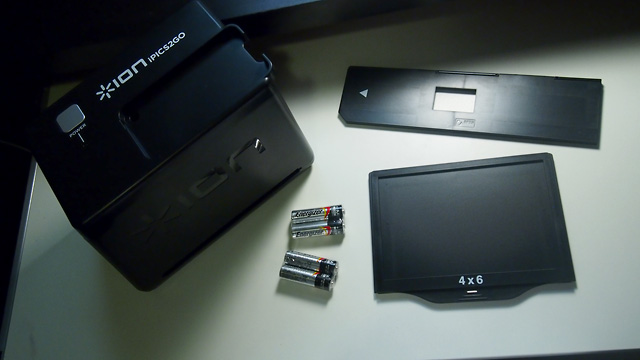
iPhone: where my pictures live
I freely admit I'm an "iPhoneography" fiend. I have a collection of DSLR equipment I can use whenever I want, but these days I rarely have the need for the image quality and resolution they provide at the cost of bulk and weight. I stopped using my long-cherished Canon digital point-n-shoot after upgrading from an iPhone 3G to an iPhone 4 well over two years ago. I still take hundreds of pictures a month, as I did with my trusty Canon, but the vast majority are taken with my iPhone.
Before going digital in 2003, though, I had a vast array of analog 35mm and medium format gear. I may not have been quite as prodigious then as I am now—after all, every shutter press cost real money in terms of film, processing, printing, scanning, and storage—but I do have a sizable collection of images taken roughly between 1992 and 2003 that only exist as stacks of 4" prints or strips of acetate. I could use a professional flatbed scanner to get high quality, high-resolution scans of the prints, negatives, or slides, but for the kind of quick and casual sharing I do with a lot of snaps, that can sometimes be more trouble than it's worth.
Instead, I've often wished there was a good way to just snap a picture of an existing print with my iPhone and then share it via Instagram, Facebook, Twitter, or Flickr. I mean, you can lay a print on a flat surface and hover your iPhone over it, but it's a real challenge to get even lighting, avoid glare, and at the same time hold the iPhone perfectly parallel to minimize distortion. Doing the same thing with negatives or slides is, as far as I can tell, impractical to the point of impossibility.
Ion to the rescue
So, at CES 2012 in January, I was amazed when I saw a prototype of Ion's iPics2Go gadget. It's an alternate take on the company's Pics2PC scanners, which use fixed digital camera sensors to scan old photos and film and quickly transfer them to a Mac or PC. However, instead of including camera hardware, iPics2Go substitutes a user's iPhone 4 or iPhone 4S. Your iPhone's built-in camera hardware does all the "scanning," and from there you can do anything you would do with any other photo: edit in apps like Camera Plus Pro or SnapSeed, make collages with Diptic or Pic Stitch, or upload to social networks like Facebook or Twitter.
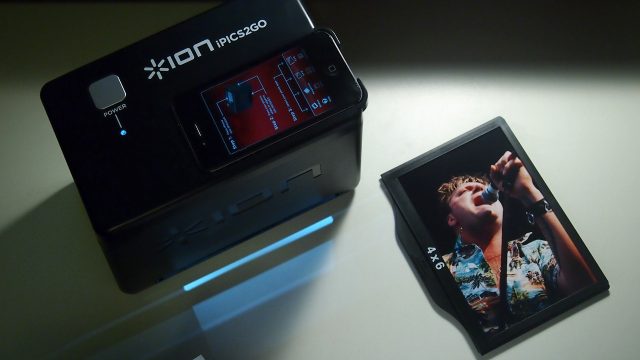
Using the iPics2Go is fairly easy. Insert a 4x6" print into the print tray and slide it into the slot at the bottom. Push the power button, which lights up an array of 6 bright white LEDs, powered by 4 included AA batteries. Then lay your iPhone into the slot at the top, launch the iPics2Go app, select "4x6," tap the shutter button, and voila! You've just scanned an old photo into your iPhone.
The iPics2Go app isn't strictly necessary if you're just snapping 4x6" prints. The shape and design places the iPhone camera at just the right position and distance to fully capture a 4x6" print. However, if you flip over the print tray, the device now works with the smaller 3x5" prints that were more popular in the 70s and 80s. The iPics2Go app can automatically crop for 3x5" prints when selected.
The iPics2Go also comes with a 35mm film carrier, which can take a 4-5 frame strip of negatives, or a mounted 35mm slide. Selecting either of these options in iPics2Go crops the nominal 24x36mm 35mm frame area, and for negative film automatically reverses the image into a positive on capture.

Additionally, the iPics2Go app applies a bit of automatic image optimization, and then gives you the opportunity to adjust the image further. I found that it consistently produced low contrast images from negatives, added too much contrast to images from slides, and gave images from prints a yellow tint. Since the effects were consistent, after a bit of experience I was able to easily correct these "optimizations" using iPics2Go's simple sliders. More exacting photogs will likely want to pass the images through an editor such as Snapseed, Photoshop Touch, or whatever other application fits their workflow.
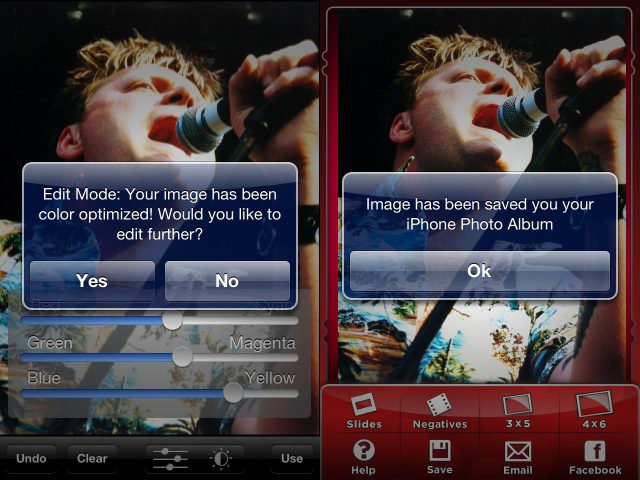

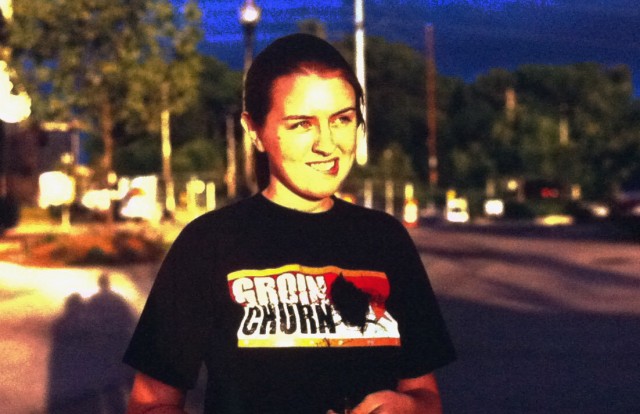
iPics2Go lets you save the image to your iPhone's photo roll, but can also e-mail photos or upload them to Facebook directly. These functions work exactly as expected, though I prefer to save the images and share them via other means. This has the added benefit of keeping the original capture around for future use, and the images get archived on my Mac whenever I sync the device (the same will be true if you use PhotoStream along with iPhoto over iCloud).
Overall, the iPics2Go device and the iPics2Go app generally work well. The device's plastic feels a bit cheap, but it also feels solid—there really isn't much of anything to break. I had a lot of fun digging up some old photos to try it out. However, it does have some problems that are worth noting. For one, the LEDs are arranged with three on the left and three on the right, which creates an area in the middle of prints that can be visibly darker than the edges. This was only noticeable in one of the images I scanned, but it really bothered me. Getting more even lighting might have required more LEDs or a change in the internal design, but for $50, it would have been nice.
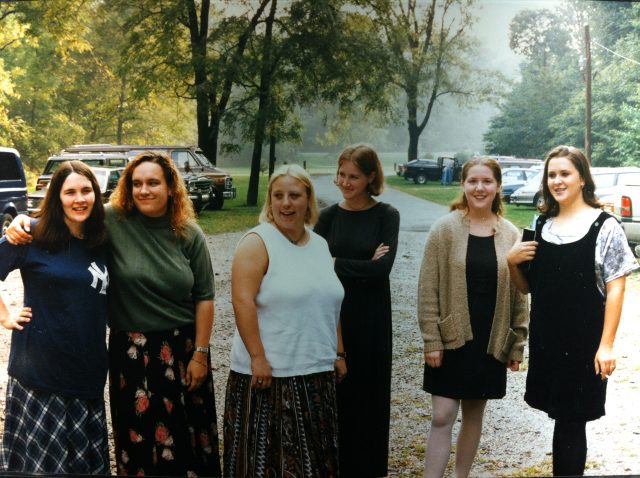
Another problem is that the frame alignment of the film carrier was off—not by a lot, but it was bothersome. I tried inserting the carrier different ways to offset the problem, but the carrier is designed to only insert one way. Given this, it feels as though more design time could have been spent ensuring the frame aligned better with the crop marks in the app. In fact, it seems like allowing the cropping guide to be moved around in the iPics2Go app would be a pretty easy fix (hint hint!).

Finally, the film carrier is designed for both negatives and prints, but the way that negatives are inserted and the carrier's design left me nervous that the delicate film could end up scratched. I didn't notice any scratches after using it, but I was extremely careful to avoid doing so. I've seen film carriers for other scanners that used a soft felt or velvet inside; again, for the $50 asking price, that little extra touch would have been nice.

I ultimately had a lot of fun digging up old band photos from Warped Tour, high school dance photos, a quick portrait I snapped of a friend when his now 16-year-old son was just an infant, and even a revealing senior portrait of yours truly (the early '90s were a magical time, were they not?).

Using the iPics2Go is a lot less hassle than firing up a flatbed scanner. It works pretty much anywhere—you can take it to mom's house and go through old albums!—and you can use your own comfortable or convenient array of "iPhoneography" apps with all your scans. We also know that a significant amount of people don't have regular access to a desktop or laptop computer, and that sometimes an iOS or Android device might be their only computing device. If this is true for you, and you have an iPhone 4 or 4S, then the iPics2Go might be the only convenient way to save old photos.
Suggested retail for the iPics2Go is a steep $59.99, though Ion wisely sells it direct for $49.99. We found it on Amazon for $41.99, and at that price we think it will pay for itself pretty quickly in terms of fun and convenience. Do note that it only works with the iPhone 4 and 4S. Those are by far the most plentiful iPhone models sold to date, but there are plenty of 3GS owners out there who are getting left out.
Verdict: Buy
Listing image by Chris Foresman
reader comments
30